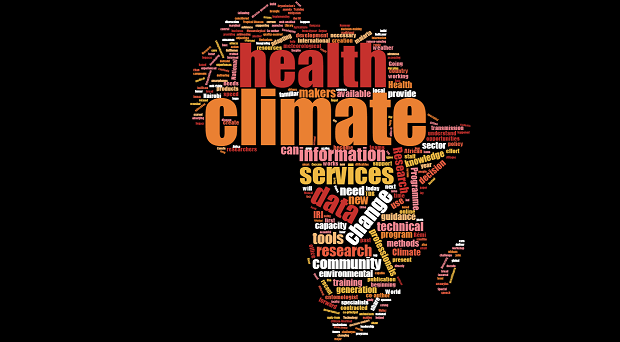
Climate change was once considered a marginal issue for the health community and, for some, a distraction from core priorities such as the control of malaria. In 2007, Margaret Chan, the World Health Organization’s (WHO) director-general at the time, brought climate change to the top of her policy agenda with a major speech at the US National Institutes of Health (NIH). The following year, ministers of health attending the WHO General Assembly echoed her concerns and passed a resolution (WHA61.19) urging member states to:
“Build the capacity of public health leaders to be proactive in providing technical guidance on health issues, be competent in developing and implementing strategies for addressing the effects of, and adapting to, climate change, and show leadership in supporting the necessary rapid and comprehensive action”.
I and other staff from the IRI were contracted to provide technical guidance to the program and share climate knowledge, data, methods and tools.
To achieve these objectives, we need a new generation of health researchers, policy makers and practitioners who can proactively support climate change mitigation opportunities while adapting current programs to a changing climate based on evidence of what works best. To do the latter health professionals first need to understand how past and present climate impacts the health outcomes they care about, and then how both climate and health challenges might evolve in the future.
In 2011 the WHO Special Programme for Research and Training in Tropical Disease Research (TDR), with the support of Canada’s International Development Research Center (IDRC) created an ambitious research program for African scientists. The effort centered around the creation of five multi-country research teams tasked with elucidating how environmental and socio-economic change affects transmission and burden of vector-borne diseases.
At first, the teams struggled to identify how their research projects would be defined as “climate change” when often the data available to them was relatively short time-series of observed epidemiological and meteorological data. I and other staff from the International Research Institute for Climate and Society (IRI) were contracted to provide technical guidance to the program and share climate knowledge, data, methods and tools.
A review of the past and present climate of the study areas, along with data, methods and available tools developed into a broader analysis resulting in the publication of our recent research article, published in Infectious Diseases of Poverty.
Formative years
My interest in climate information for the health sector connects deeply to my training as a medical entomologist. While working for WHO’s Onchocerciasis Control Programme I realized that information about regions’ wind speed and direction was important in determining migration patterns of the blackfly vectors of River Blindness. Later, as the chief entomologist for Gambia’s National Insecticide-impregnated Bednet Programme, I found climate to be a significant factor driving the seasonality and variability of malaria in this small country.
These experiences happened in the mid-1980s, when satellite data and geographical information systems were emerging as new opportunities for research on environmental drivers of disease transmission. Despite these advances, it is only now, three decades later, that we are beginning to see the types of climate information and services that health decision makers in Africa can routinely use.
Developing climate services and training the next generation
Integrating climate and environmental data into health decision-making has long been a challenge because of limitations in available data and difficulties in accessing it at the necessary time and spatial scales. This is beginning to change. IRI remote-sensing specialist Pietro Ceccato, who was a co-principal investigator on the TDR contract, noted how even in traditional Maasai villages, people are using smartphones, capable of delivering climate data directly to local decision-makers.
The capacity to create web-enabled tools that can deliver quality-assured climate products and services is the bread and butter of technical specialists such as my co-author Rémi Cousin, who works on the IRI Data Library. Rémi has been working with African national meteorological agencies for more than a decade to create online climate services that country health specialists can use. He has also helped build capacity in different local institutions to sustain the effort.
Going forward climate services needs to become as familiar to decision makers as weather services are today.
However, the creation of climate products and tools will have limited impact without an informed health community, trained to understand how to use this new information, with the knowledge to demand more.
Going forward climate services needs to become as familiar to decision makers as weather services are today. For this to happen, we need to invest in the next generation of health professionals to bring the sector up to speed.
In August this year, Co-author Ángel G. Muñoz and I traveled to Nairobi to help facilitate a climate and health workshop at Jomo Kenyatta University of Agriculture and Technology. The enthusiasm for the topic-from students and faculty alike-is a strong indicator that a climate-informed health community is in the making. In fact, what we experienced in Nairobi is being fostered at a global level through a joint office of WHO and the World Meteorological Organization. This office is charged with the development of climate services for the health sector, and is led by another co-author, Joy Guillemot.
New education and training resources are essential in the development of a climate smart health community. The publication of our recent paper and related online resources, such as the new book, “Climate Information for Public Health Action” will, I hope, provide a broad community of health professionals and researchers with the information they need to get started.
Comments